Expansion in Log Cabins can occur with most cabins, this is the natural movement of the timber. But with this advice, many issues can be resolved and your cabin will return to its original state.
Two Extremes with Log Cabins
There are two extremes of the year in a log cabins first year of life. The height of Summer and the depths of Winter. Both of these times may possibly cause problems for you depending on the level of treatment you gave your cabin. These problems generally happen in the first year cycle of a newly built log cabin as I explain in the articles referenced below.
The problems are one of either expansion or contraction of the wall logs that make up your log cabin.
But, with that said you should never, ever notice this movement, such is the design of most log cabins. The building will grow and shrink un-noticed by you…..
BUT. Only when built, treated, and vented correctly, with the correct layer of damp proof membrane on top of or within the base. The correct treatment though cannot be stressed enough. It will inhibit both these natural features of wood and you will never have a problem or even notice what your log cabin is doing over the seasons.
Contraction of logs in your log cabin – Summer
In the summer we will see contraction and I have written a lot about it in a previous article: Moisture Content of a Log Cabin and Depth of Treatment this article is helpful as it explains the intake and expulsion of moisture from the relative humidity and explains how each log can expand and contract by as much as around 3 – 5mm per log. Over the course of a building log height you have a potential movement of about 80mm, that’s about 3 inches! Sometimes it will be more. Especially if the building has received little or no treatment and within its first 12 months.
A second article which will interest you on the subject of timber movement within a log cabin is: Contraction of a Log Cabin this article explains what can happen in the height of summer, and when a log cabin has had little or no treatment.
Expansion of logs in your log cabin – Winter
Here are some examples of problems that may occur. All of which are down to the natural expansion of timber within the winter months. Most of which is avoidable with treatment, damp proof membrane and in some cases ventilation and correct installation.
White Bits
The most common area that you will notice with expansion in your log cabin is when white bits start appearing.
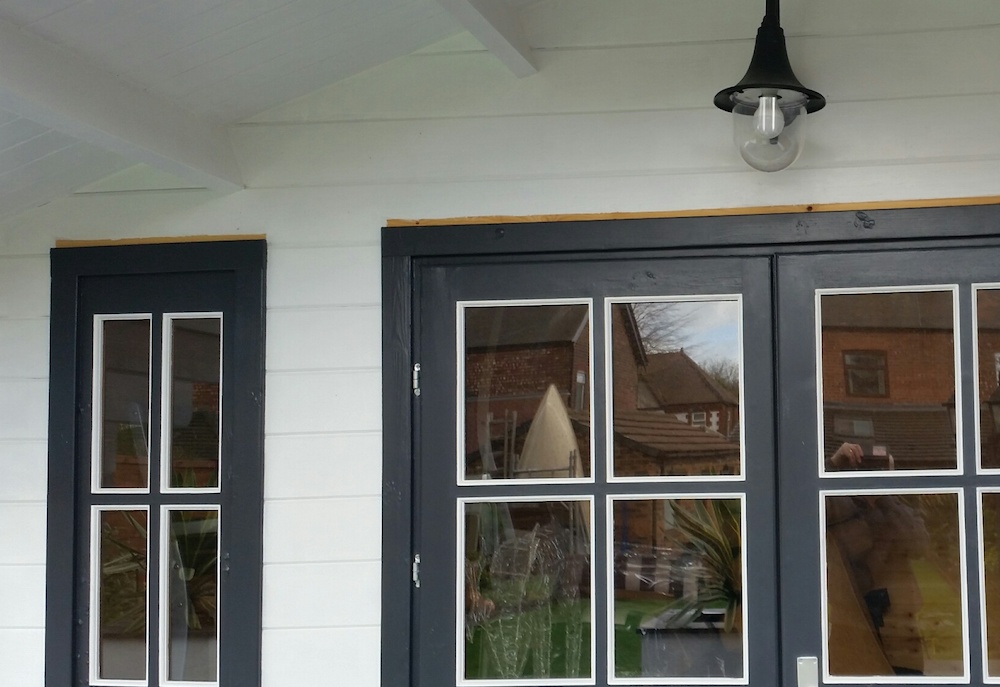
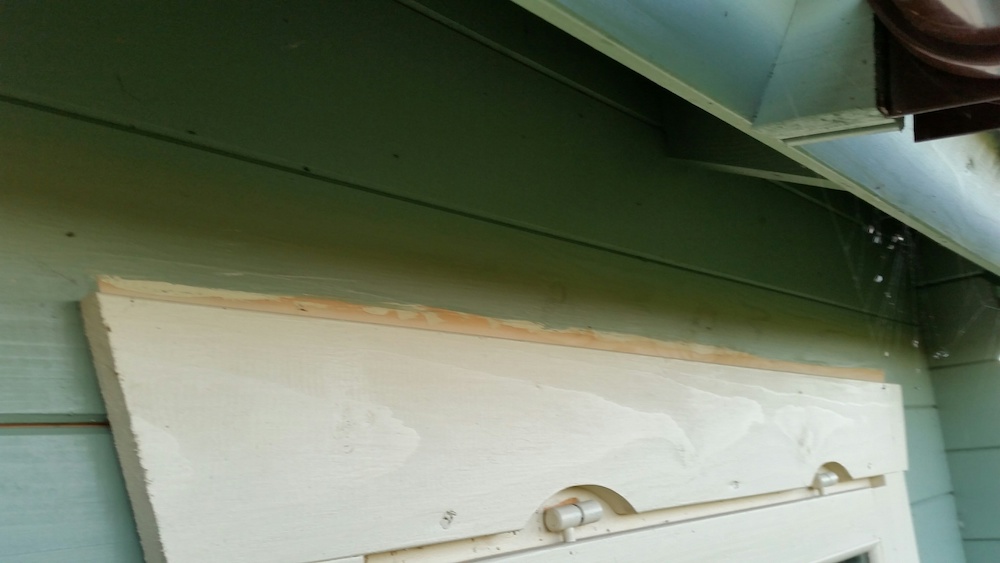
For log cabins built around July, August, September and a little later this is fairly common to see and is entirely normal. This is happening as the logs are inherently a sponge and made up of 1000’s of straws which of course the tree used to suck up water from the ground, this is what is happening with the logs during the winter months, they are sucking in moisture and expanding.
This is entirely normal and one that’s avoidable by the correct application of a good quality treatment. We also advise in our Log Cabin Treatment Advice article that when treating your log cabin to also paint behind the fascias to the side and above and you will then never notice this expansion taking place at all. If correctly treated it may not even take place at all!
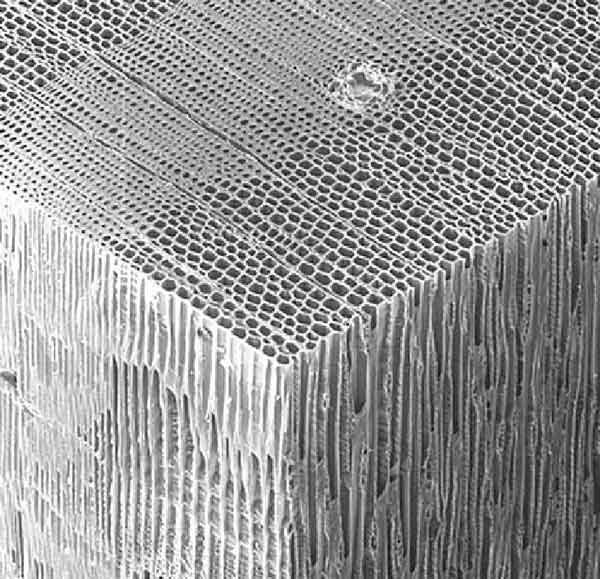
Gaps Appearing
During the summer months we sometimes see gaps appearing if the cabin due to improper build or treatment. During the winter, we can very occasionally see another form of gap appearing and this is generally above the door.
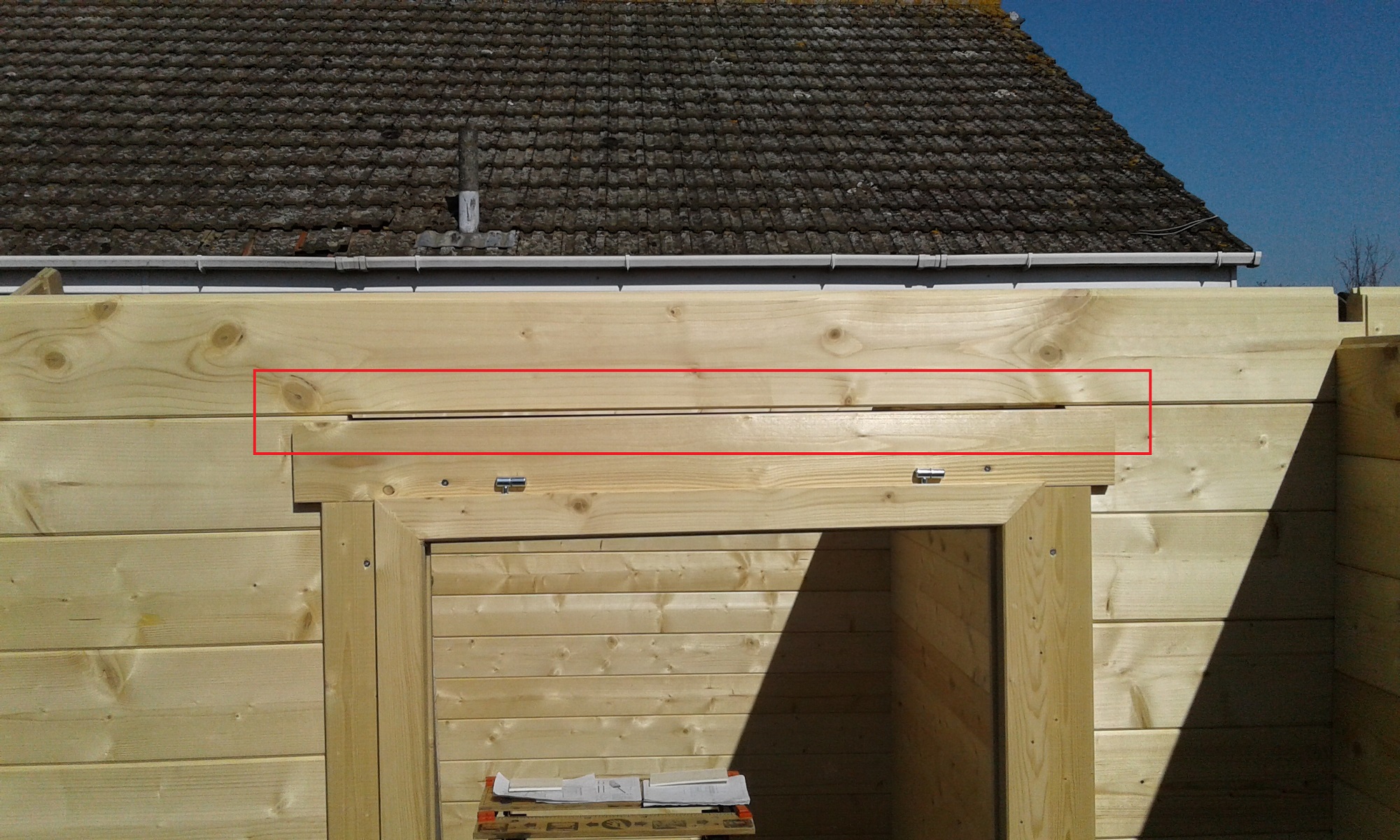
We have seen this a few times in extreme cases. It’s an easy fix with a shim placed under the door and the checklist at the bottom of this article followed come the warmer months.
Frames Apart
In our Log Cabin installation advice page and also the instructions that come with all log cabins we do try to get across the importance of NOT fixing anything across two or more logs, including the doors and window frame and fascias as the wall logs need to be able to move independently due to their contraction and expansion. Sometimes though this advice is not followed.
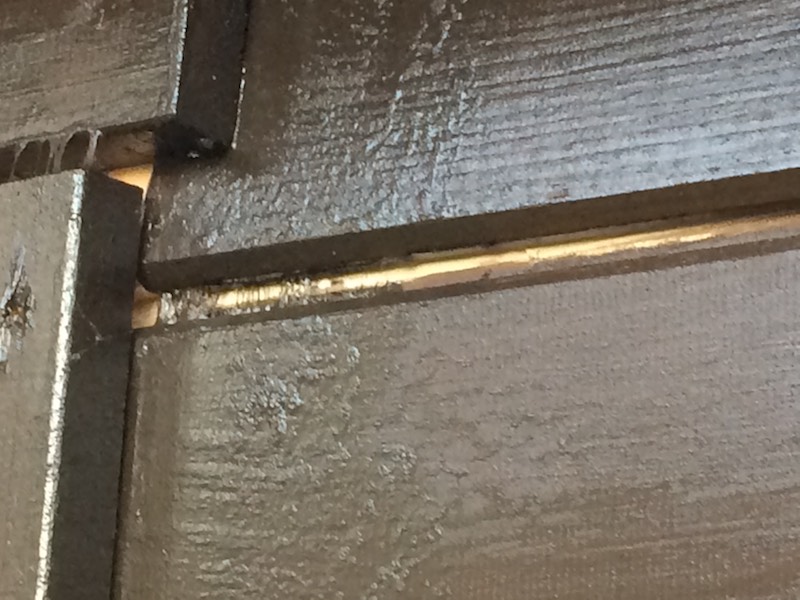
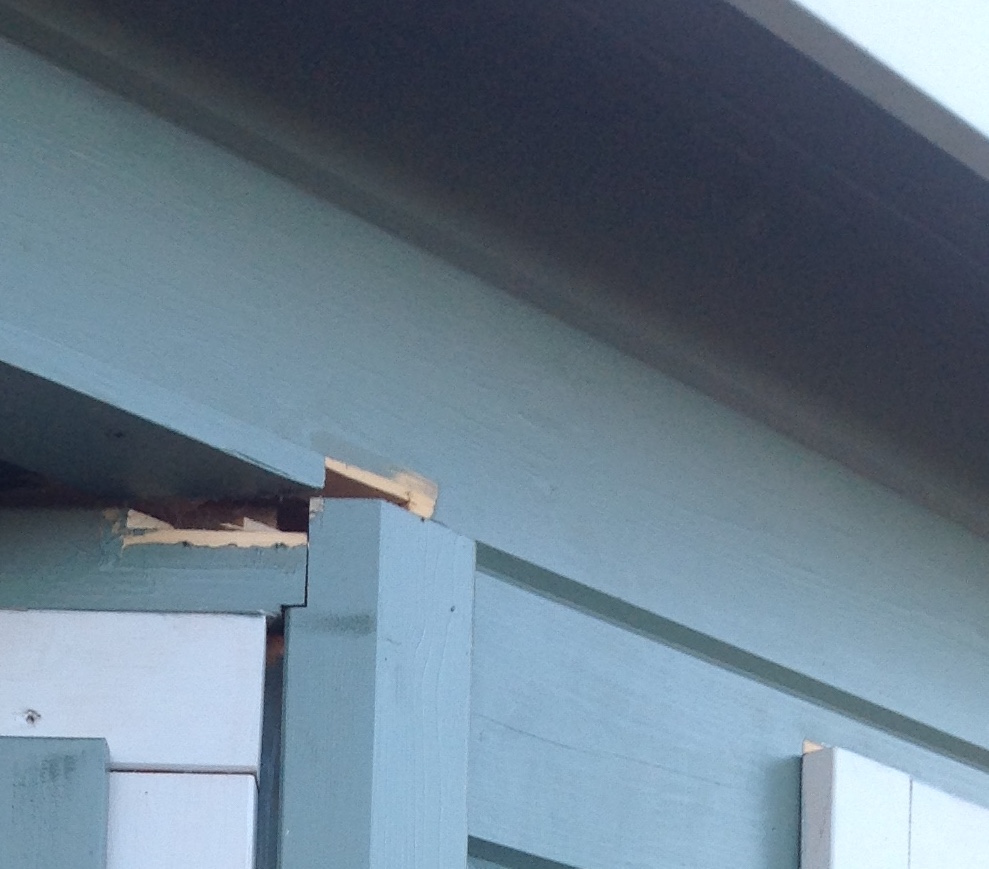

Below is another good example of the door frame pulling apart from the top fascia being. See how evident the rogue screw is. As well as how much expansion occurs from the force of the screw.


Floor and Roof
The floor and roof of your log cabin also warps by expansion and contraction. It is important to consider the time of year you are installing. At the height of summer you will need to ensure you leave a small expansion gap between the boards. In the case of the floor it is very important to leave room for expansion all around so the floor does not push against the sides of the log cabin.
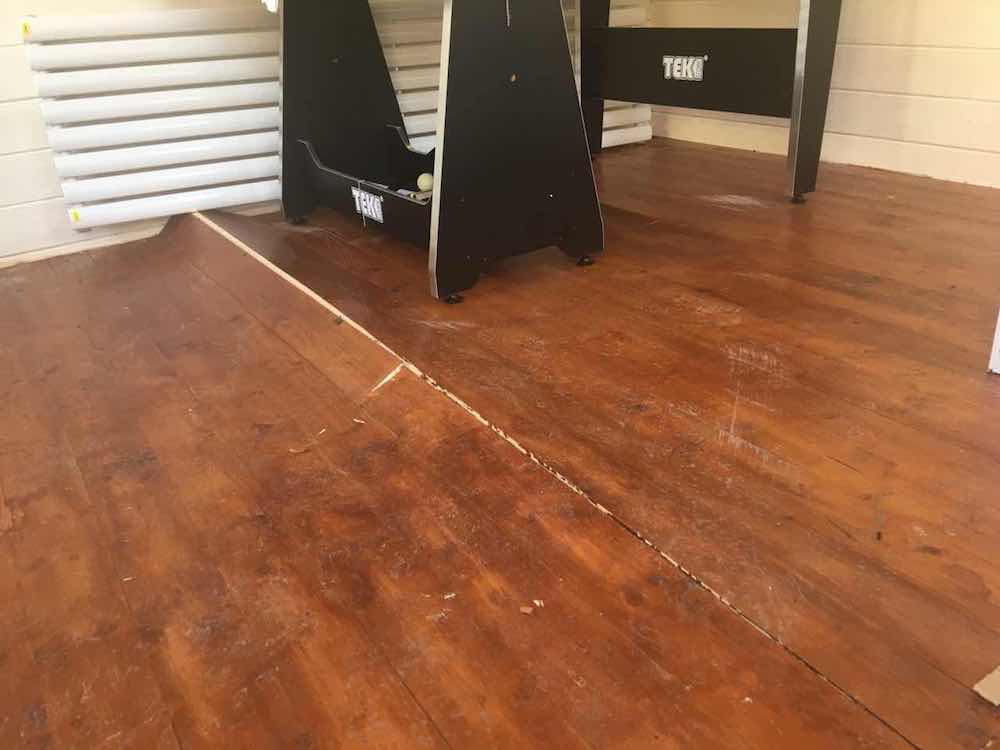
Treatment
It is always at this time of year that we get a series of complaints that all can be traced back to treatment, I wrote this article at the same time last year: Log Cabin Treatment Gone Wrong this highlights a lot of the issues when treatment is not correctly applied or the good quality treatment used.
If treatment advice goes ignored, it will become most obvious at the height of winter.
Problems with treatment will not only manifest itself by unsightly marks as seen above . However you may also have leaks in extreme driving rain conditions. The is due to ineffective or cheap treatment. Which then cracks and allows water to ingress via capillary action. This is also caused by improper application.
Particularly one of the cheaper shade treatment requires light sanding, wiping with spirits and at the least two coats applied within a few hours to be effective. The manufacturer goes on to state that with dry wood, you need to apply three coats. Often overlooked, you need wood preservative under many cheaper treatments. Without following any manufacturers explicit instructions any treatment will be ineffective and problems during the first year of a log cabin life can be expected. We would recommend at least four coats of any treatment correctly used. For more advise on this please see: Log Cabin Treatment Advice.
Water Ingress
There are a number of reasons for water ingress, the most likely is lack of treatment, a poor quality treatment or an ineffective treatment, especially in the corners and importantly on the end grain, this is particularly important to stop tracking of water via capillary action via the grooves in the profile of the logs.
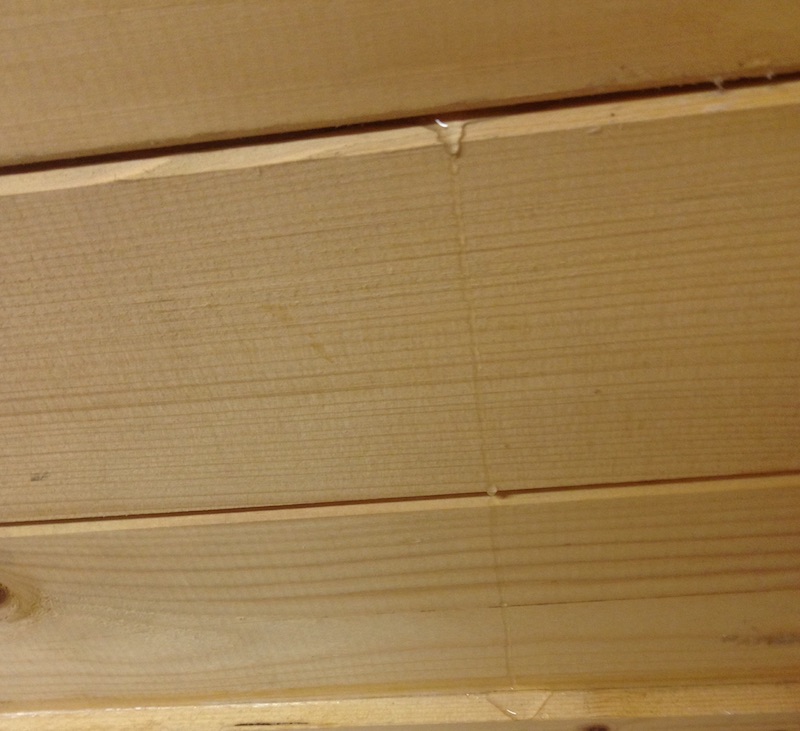
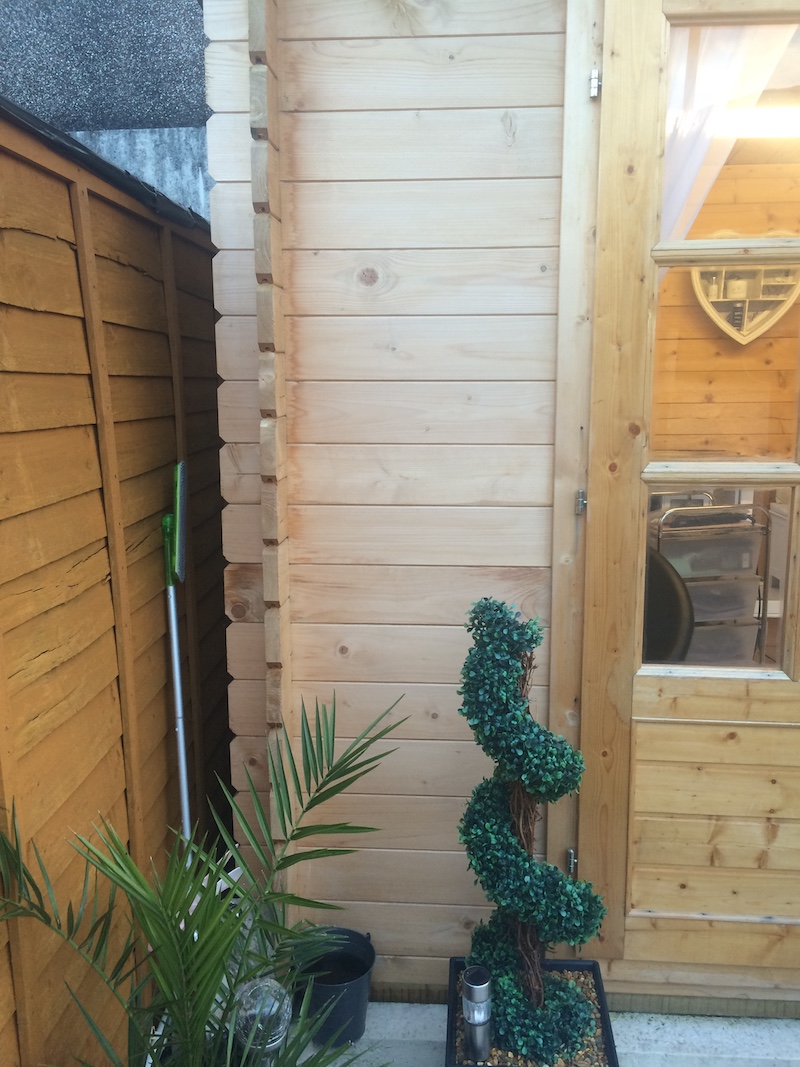

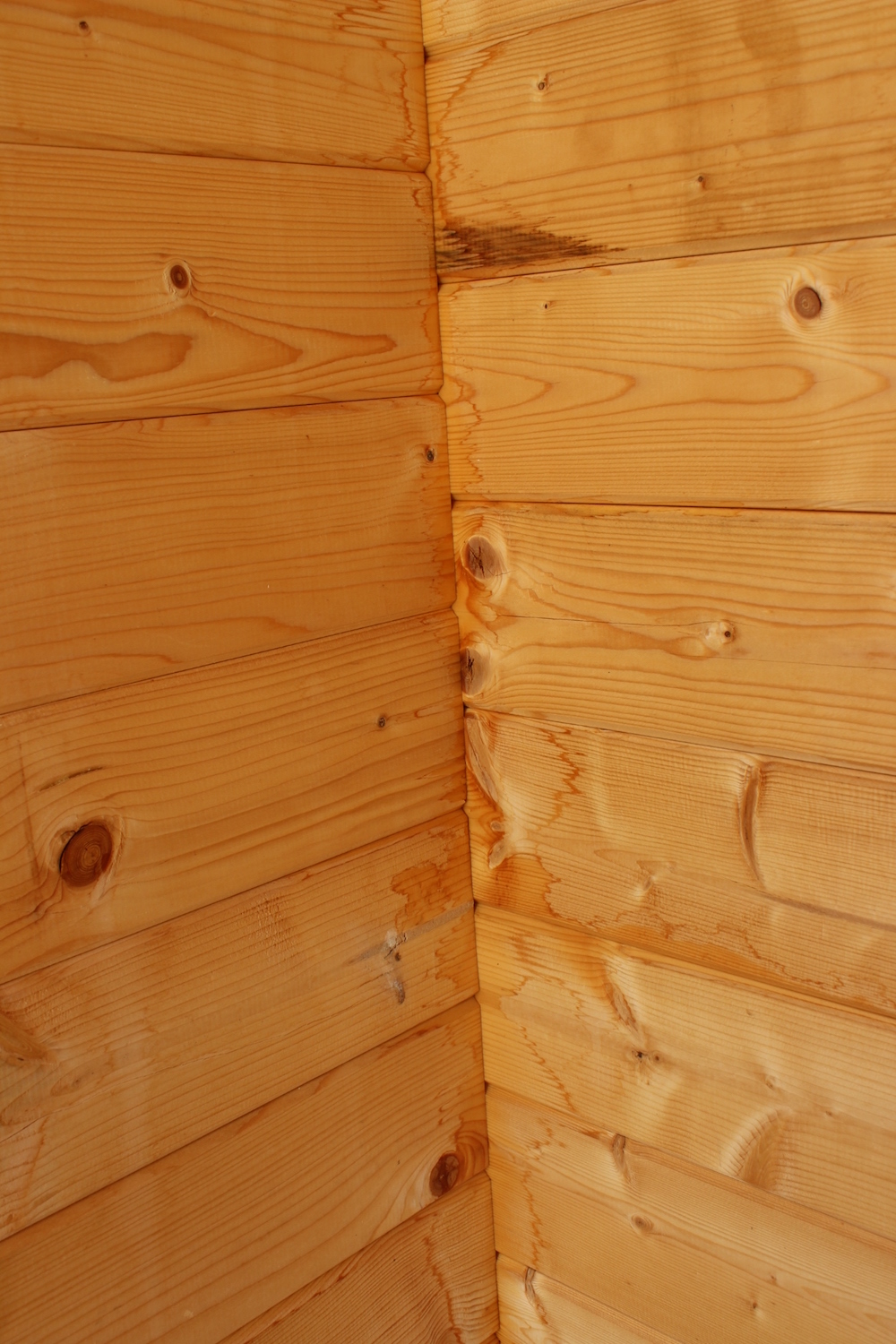
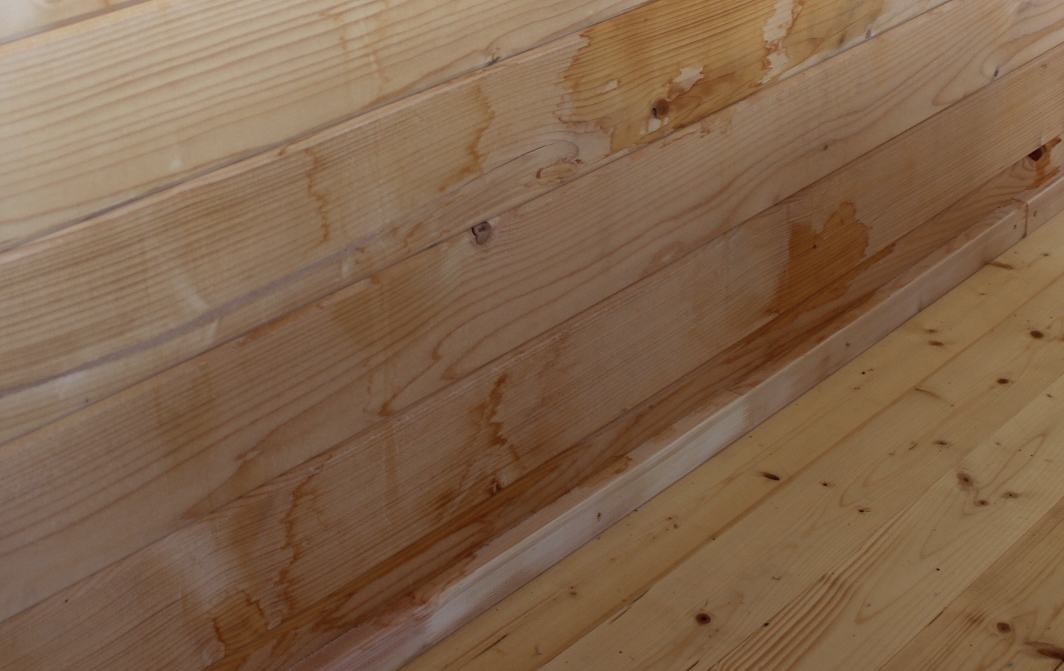
Condensation
Condensation occasionally goes overlooked and this affects your building greatly. As we advise it is vitally important that you incorporate a damp proof membrane within your base, on top of it. Advice on this can be found in our Log Cabin installation advice article.
Even with a DPM, condensation still builds up in your log cabin if not regularly used. In this case it is highly advisable to fit some sort of vent. More advice can be found in our Ventilation in Log Cabins article.
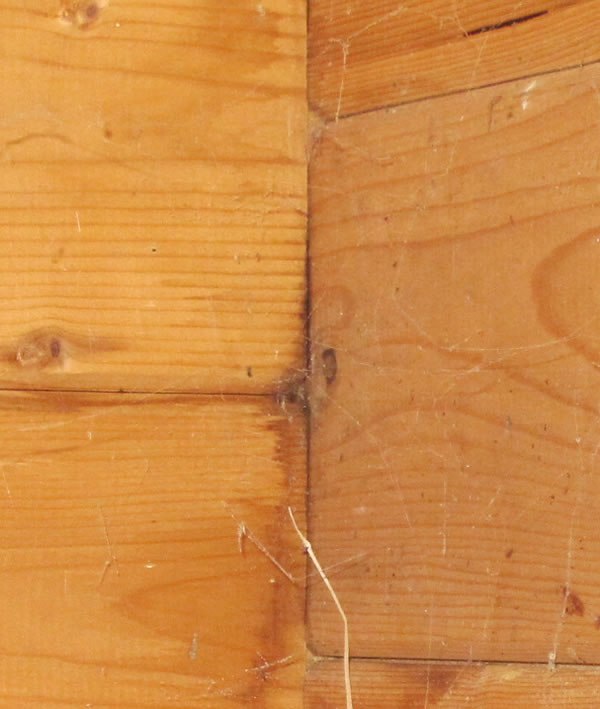
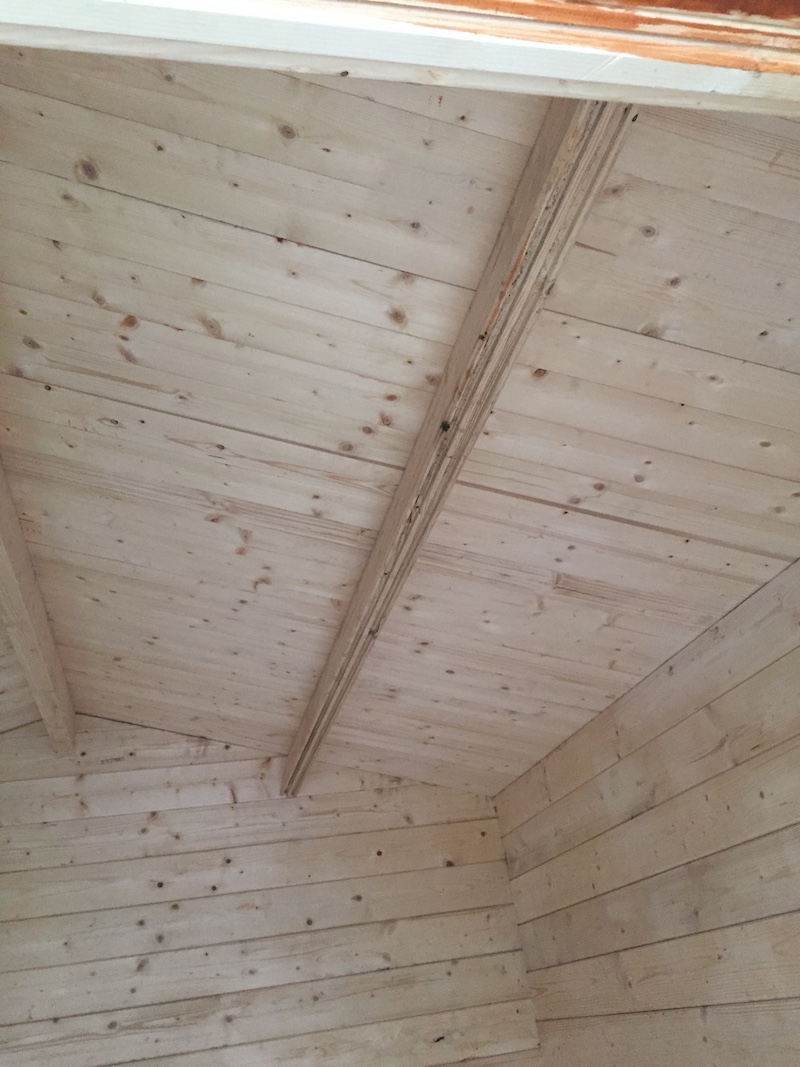
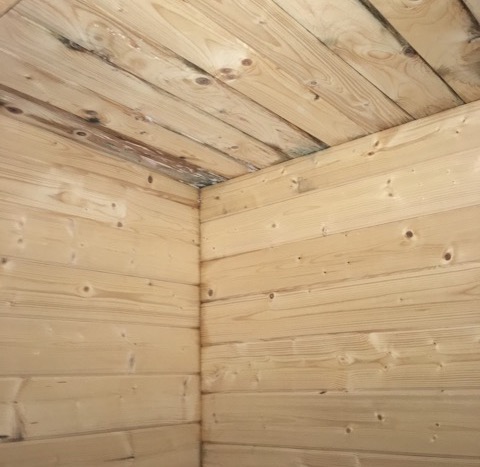
Doors and Windows
Last night I had an email from a friend who said ‘don’t go around the back to the conservatory door as it’s stuck, it’s always like that when its cold’. I smiled to myself, of course it has nothing to do with the cold, it’s everything to do with treatment and inhibiting the expansion of the wood in her patio doors. It’s exactly the same with a log cabin door set and windows. They will react in exactly the same way if they do not have enough layers of good quality treatment applied.
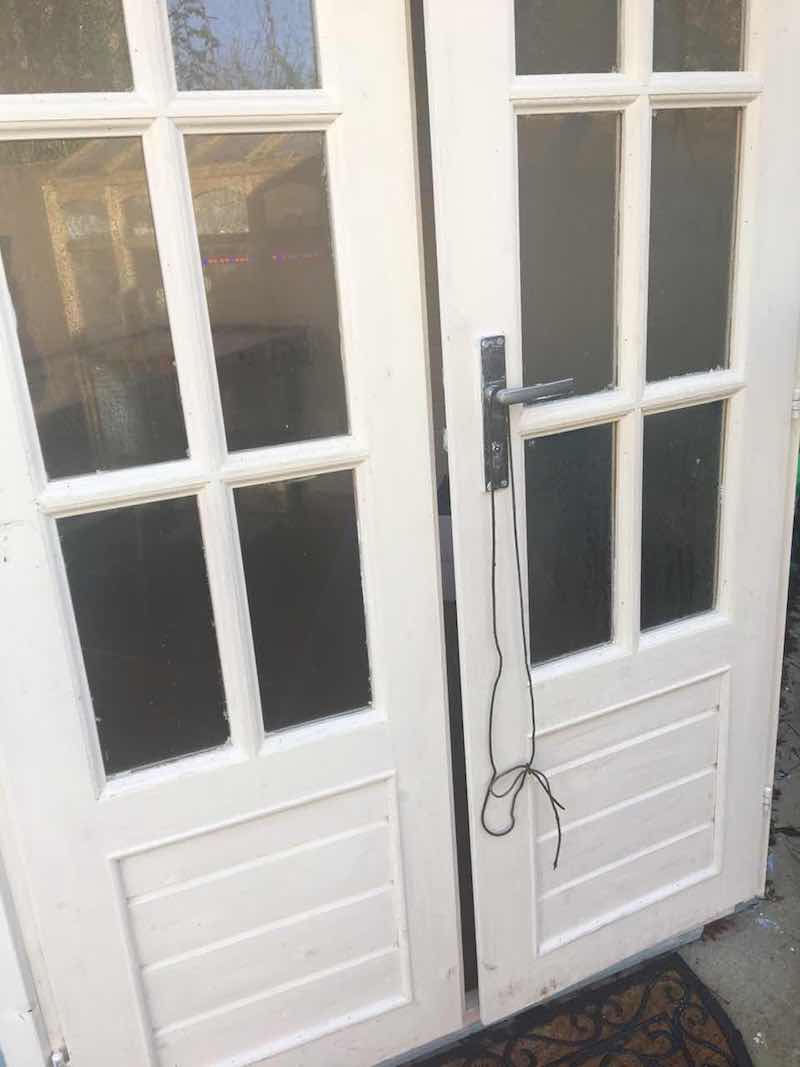
Summary of Expansion in your Log Cabin
All the above points affect any log cabin no matter the manufacturer and indeed any timber structure both inside and outside of your home.
If you have any of these issues, please do not worry, these are easily solvable:
White bits
This is the easiest to solve. Wait until the weather improves and then remove the fascia, you can then paint behind them and you will never notice this again.
gaps
Gaps appearing above your doors or above the windows. This is solved by raising the door or window frame and inserting a packer the length of the frame. The gap will then be hidden behind the fascia. You will need to remember you did this. Then consider removing it in the Spring when the log cabin starts to contract again.
Frames or Trim parting
It is very likely that fascia or frames have been attached somehow to the logs. Please remove any fixings you can find. Doors and windows can easily be removed by taking off the fascia. Please then make sure the whole frame is refixed together and reinstall. Do NOT fix any part of it to the wall logs or trim mounted on the corner triangle.
Floor and Roof
This will be a little trickier to solve. For the roof I have found more nails can be added. It is generally enough to solve the problem as it can still expand across the whole length. The floor maybe pushing against the wall logs. Check for this and if it is the case you must create an expansion gap all the way around. A jig saw will be able to accomplish this. In extreme cases you may need to consider a whole new replacement floor.
Water Ingress
This one is a little trickier during the winter months. It is probably best to leave it until the warmer Spring months. You will need to review your treatment process and what you used. For cheaper shade treatments you will have sanded the walls, washed it with white spirit, applied a preservative, then applied at least three coats in batches of 4 – 5 hours. Better treatments such as Sikkens and ours will generally need three coats, sometimes an undercoat is also required. For our carefree protect treatment this can be applied direct and built up to three – four coats over a number of days for full protection.
Make sure you have read and fully actioned the manufacturers instructions. Please see our depth of treatment article for more advice. You will need to consider re-treating your log cabin and also upgrading the treatment you originally applied. As we advise, if you use a top quality treatment, correctly applied these problems are unlikely to occur. The first thing, you can notice by eye if a treatment is a good quality is. If there is there stretching of the treatment across the joints over the winter? You can often see this. A cheap treatment will simply crack and that is when ingress can occur through capillary action. Look out for this!
Condensation
Please check an effective and un-punctured DPM has been applied within or on top of your base. This is your first port of call for a condensation problem. If you are not sure or one isn’t supplied, the floor needs lifting to fit one. If it has and the building is closed for long periods over the Autumn and Winter please consider adding at least one vent into your building. More advice can be found here: Ventilation in Log Cabins
Doors and Windows
On most of our log cabins the hinges can be adjusted to account for this, please see this page for advice: Log Cabin Doors you will also need to consider the treatment advice above, ideally doors and windows will be treated equally both inside and outside.
First Year of Life!
It’s odd but after a year and completing the cycle a log cabin seems to settle down a lot. I think it is because the straws in the wood make up drop, crush or get blocked. After a year all these things seem to settle and almost disappear.
Some of the above may have left marks or stains which take away from the aesthetics of you building, however, all is not lost and can be easily cleaned again.






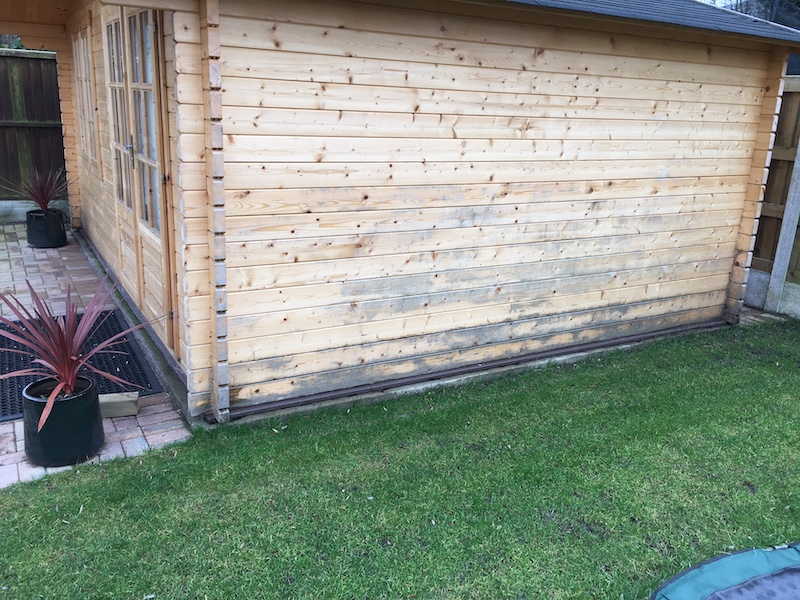
Hi.. Had my log cabin built last year. I absolutely love her. I had this idea I wanted to paint it with specialist paint but had second thoughts & decided not to. I went with a treatment first on the outside for blue stain & wood boring insects did 2 coats then a week later I put a water proof coating on top & did 2 coats of that aswell. Protecting it from the elements was the best thing I did. Not actually used it yet as I wanted it to settle but thus week the electrics have just been installed so I’m looking at easter for when I’ll be using my cabin. I’ll be putting some treatment inside soon.. ive found which I didn’t know that the cabin is seeping sap which I was told is normal stage.. Best thing I’ve invested in..
Zoe
when is the best time of year to build a log cabin, to limit expansion/contraction damage?
For me the best time is Autumn and Spring, it’s still warm and there are some hours of light still left, you’re also not likely to get so much direct sun which make working easier and less chance of warps caused by logs being left in the sun.
The expansion and contraction is not ‘Damage’ it is simply a natural product behaving the way it does.